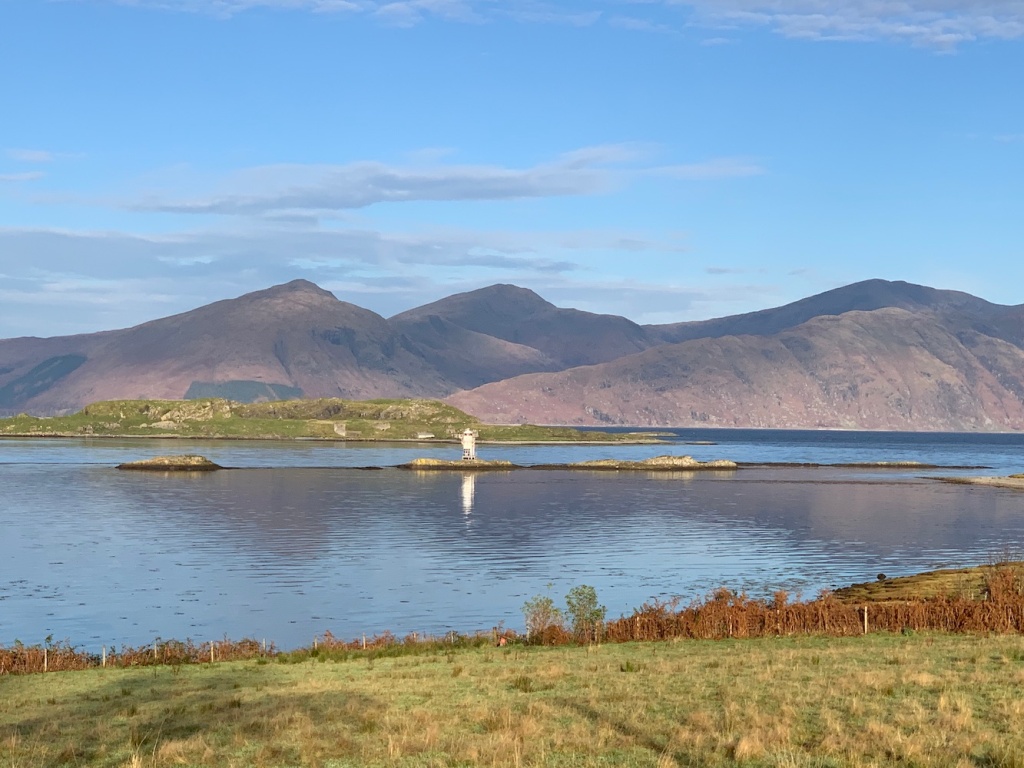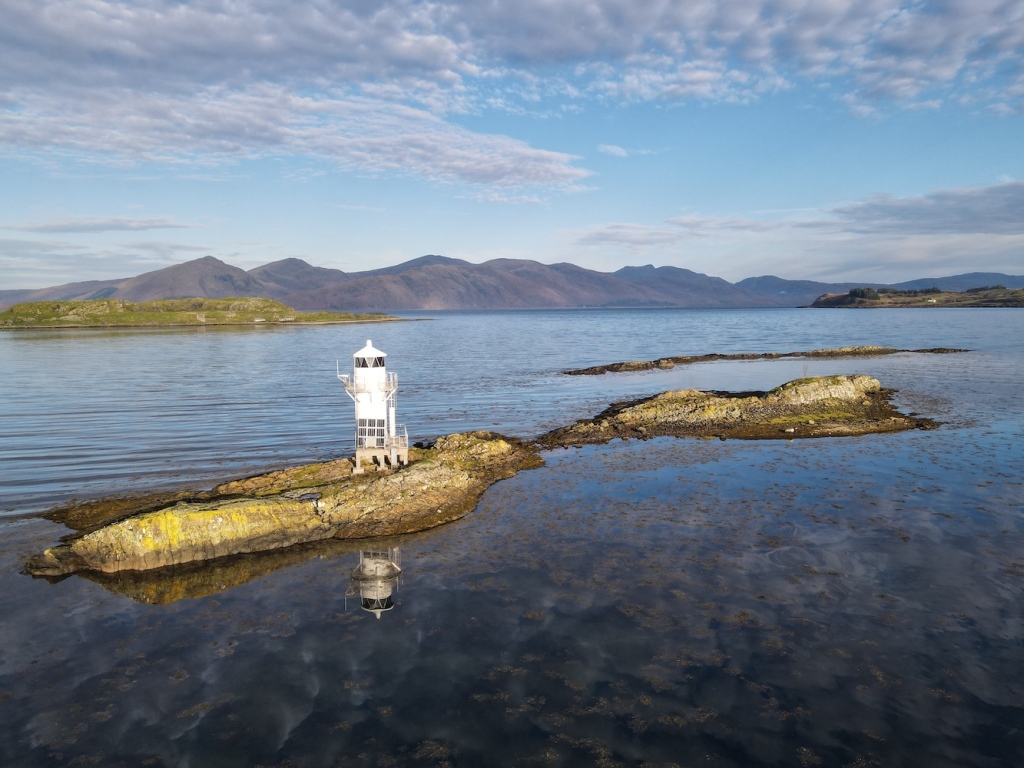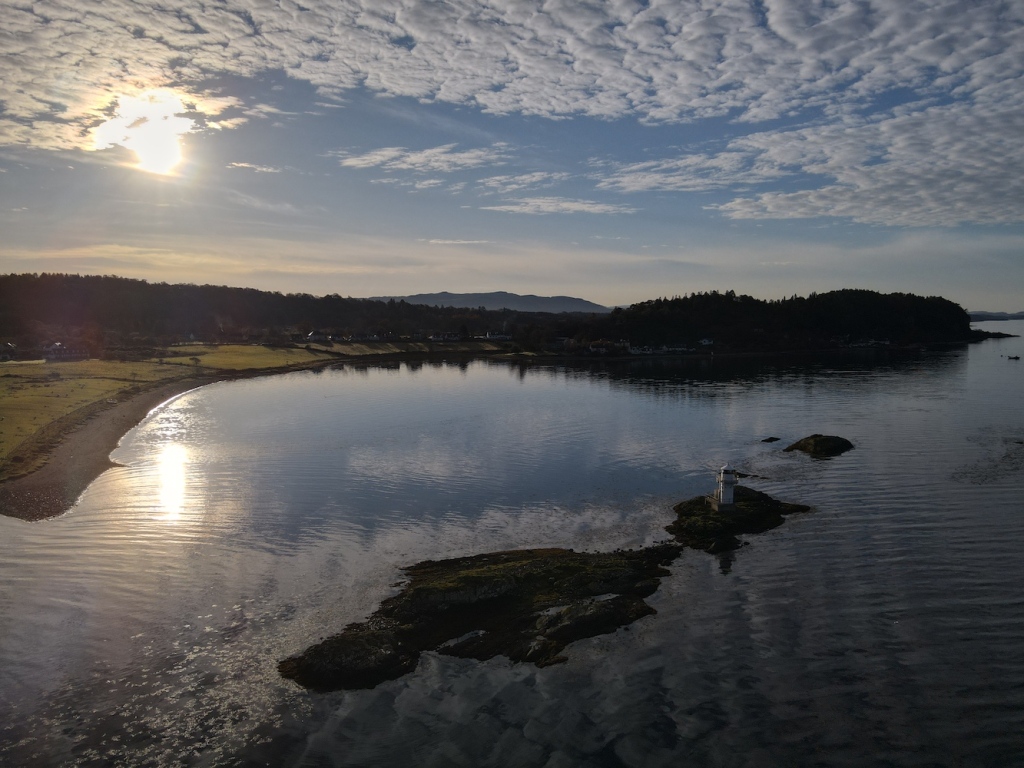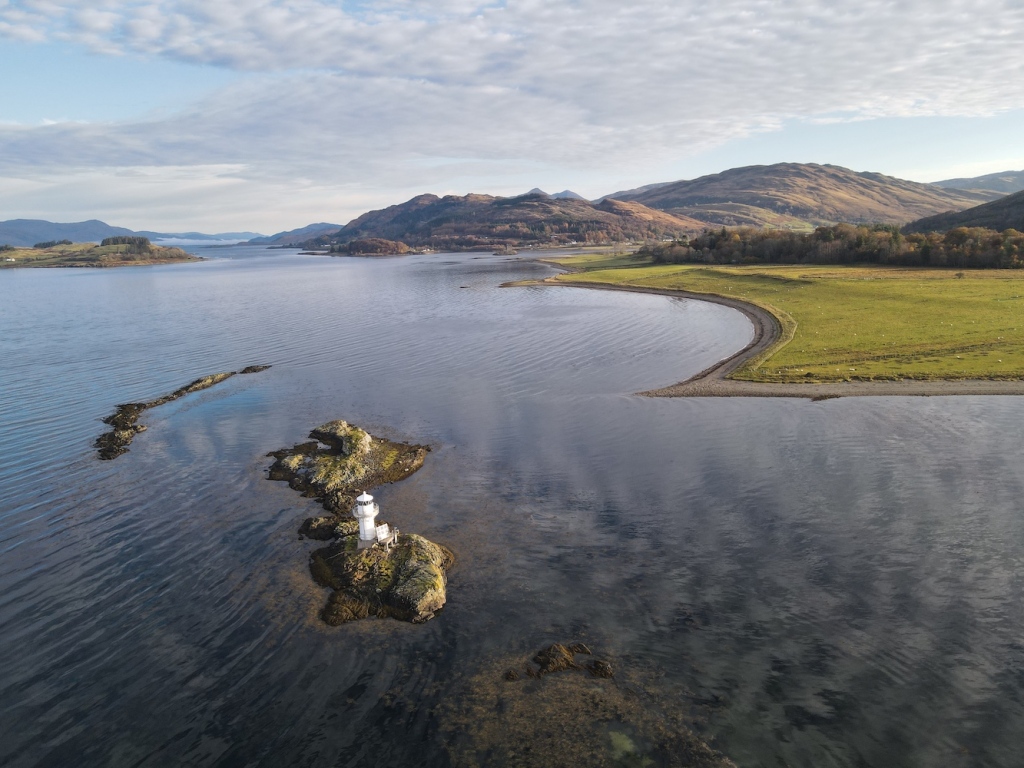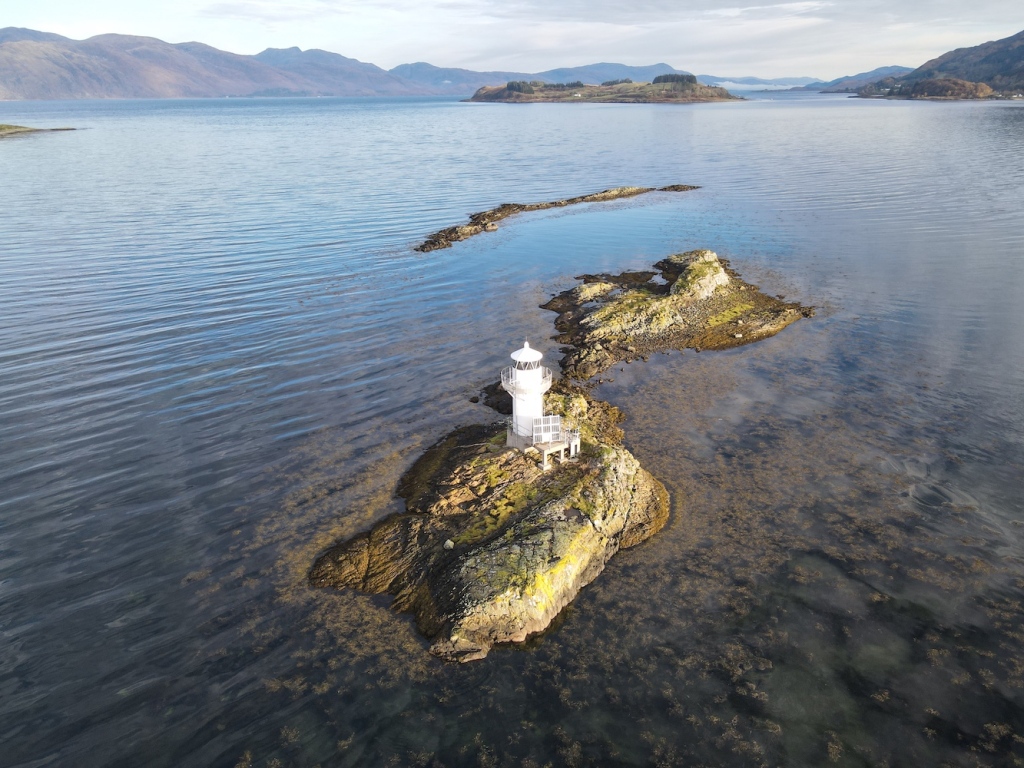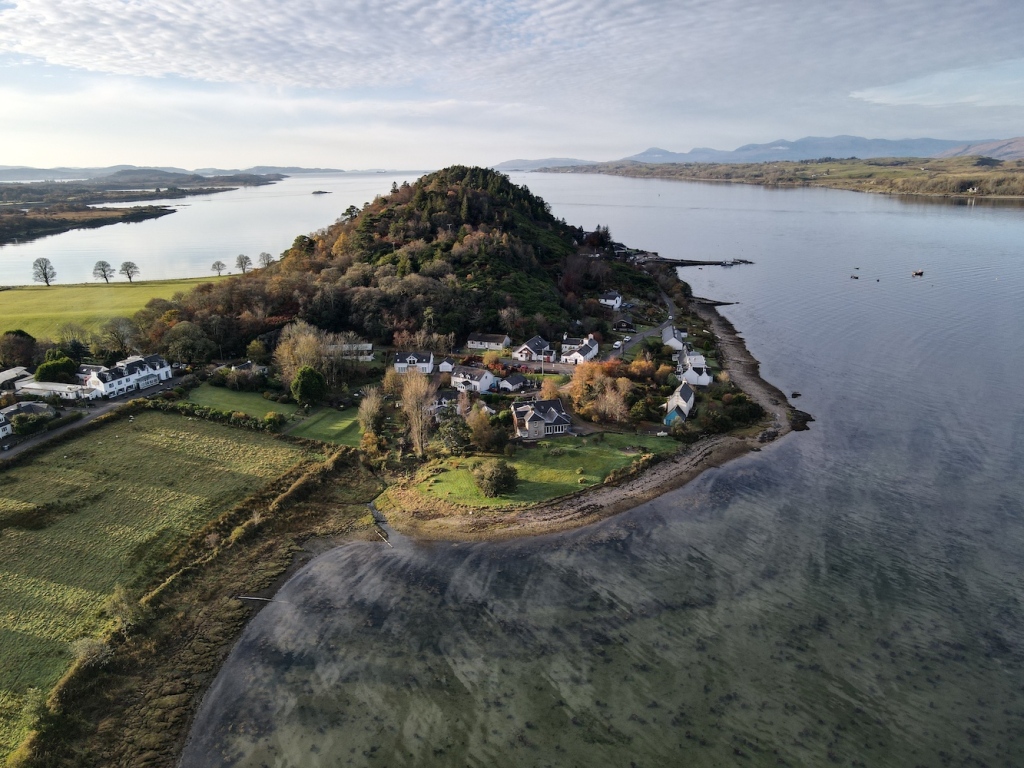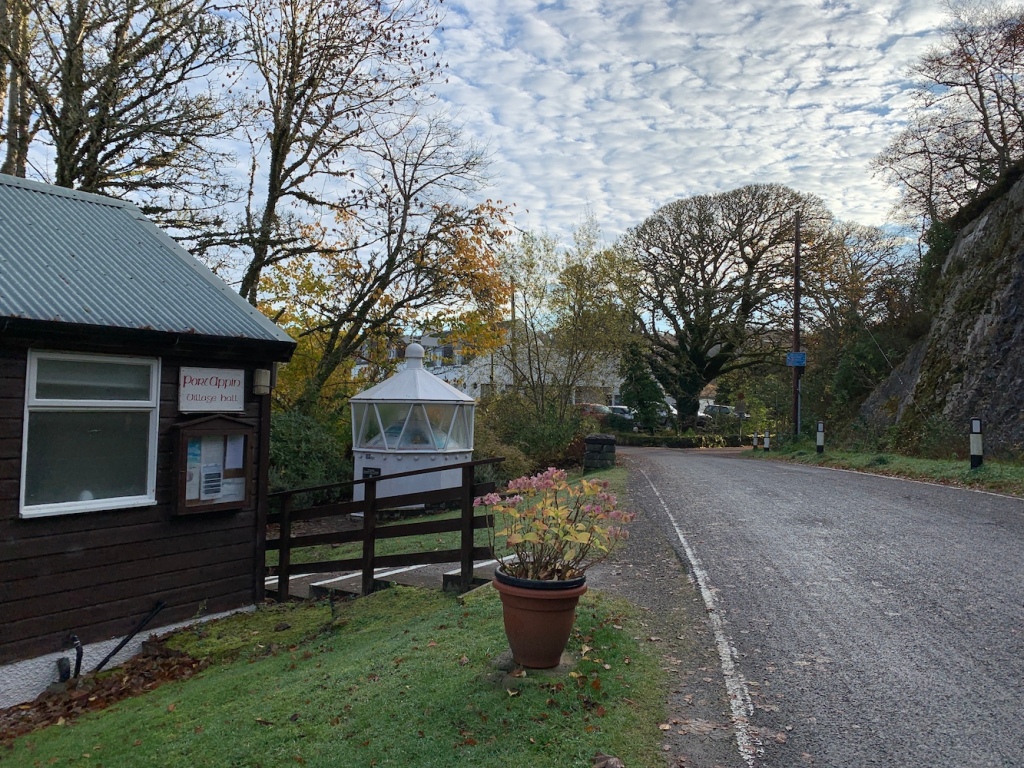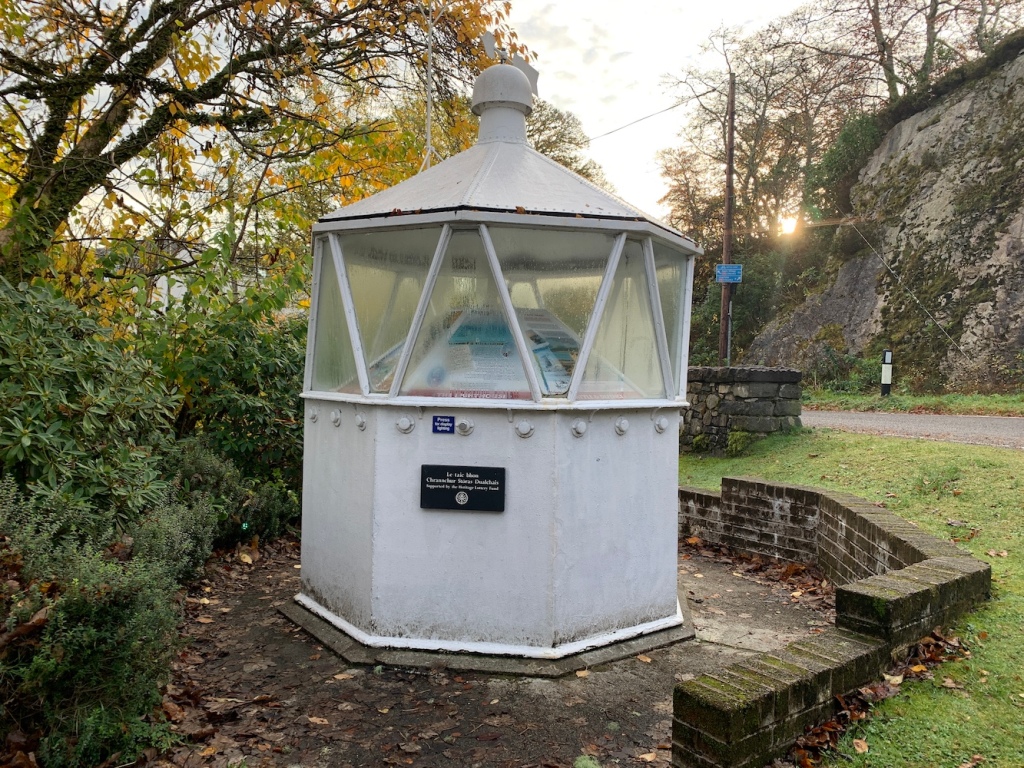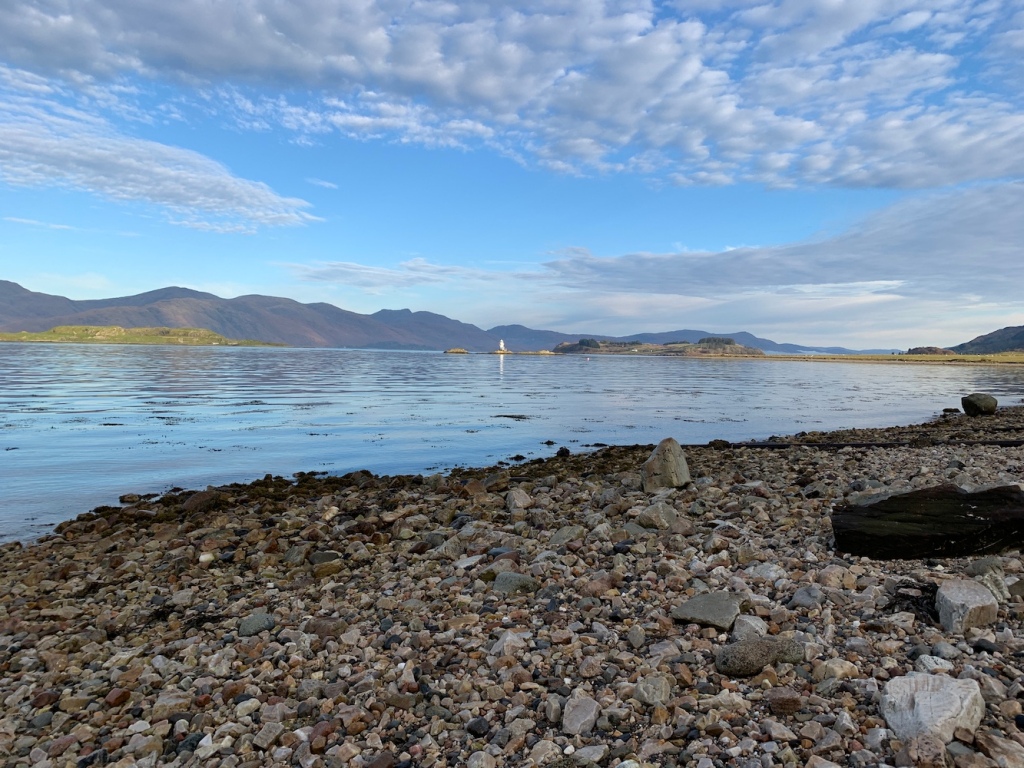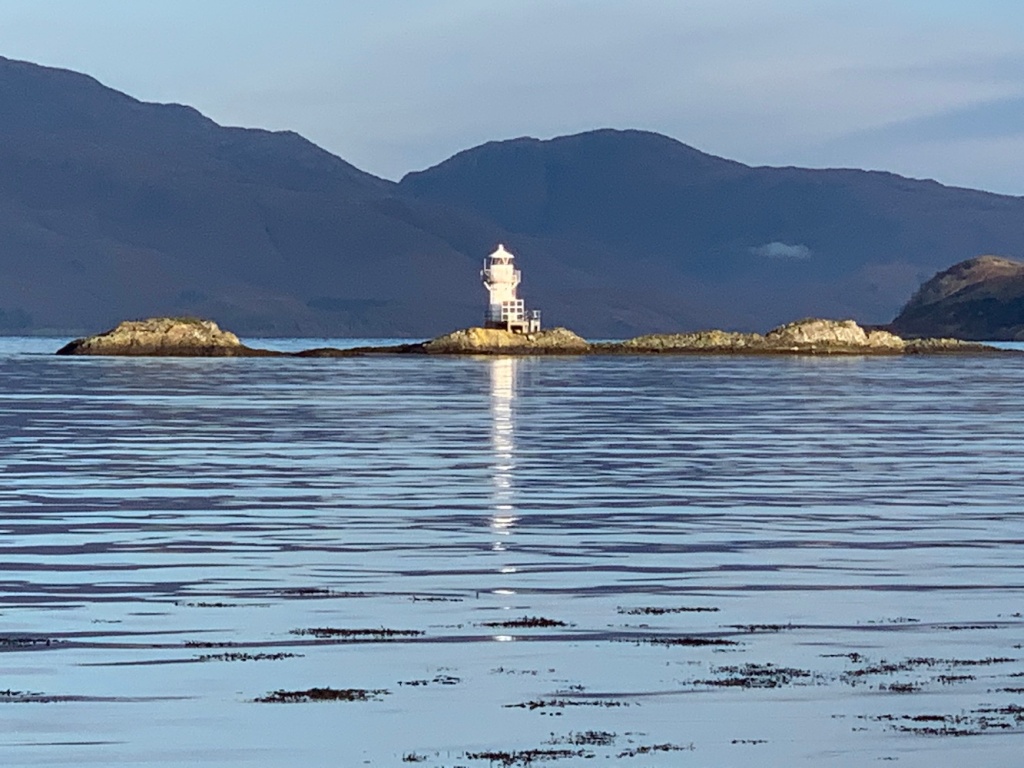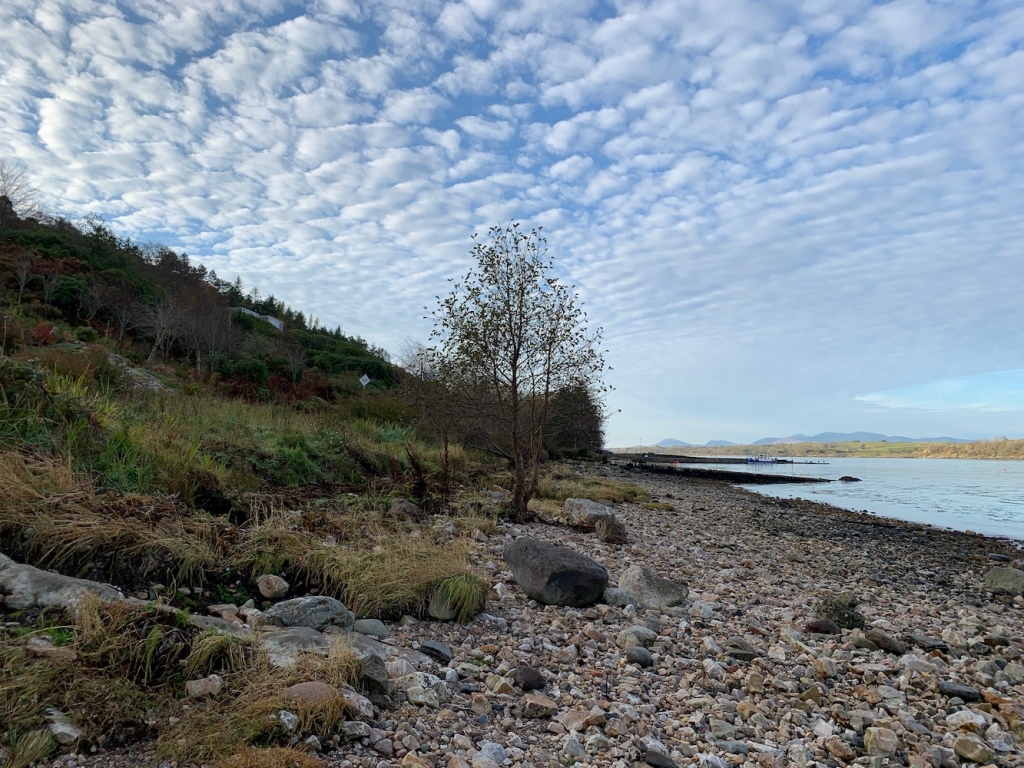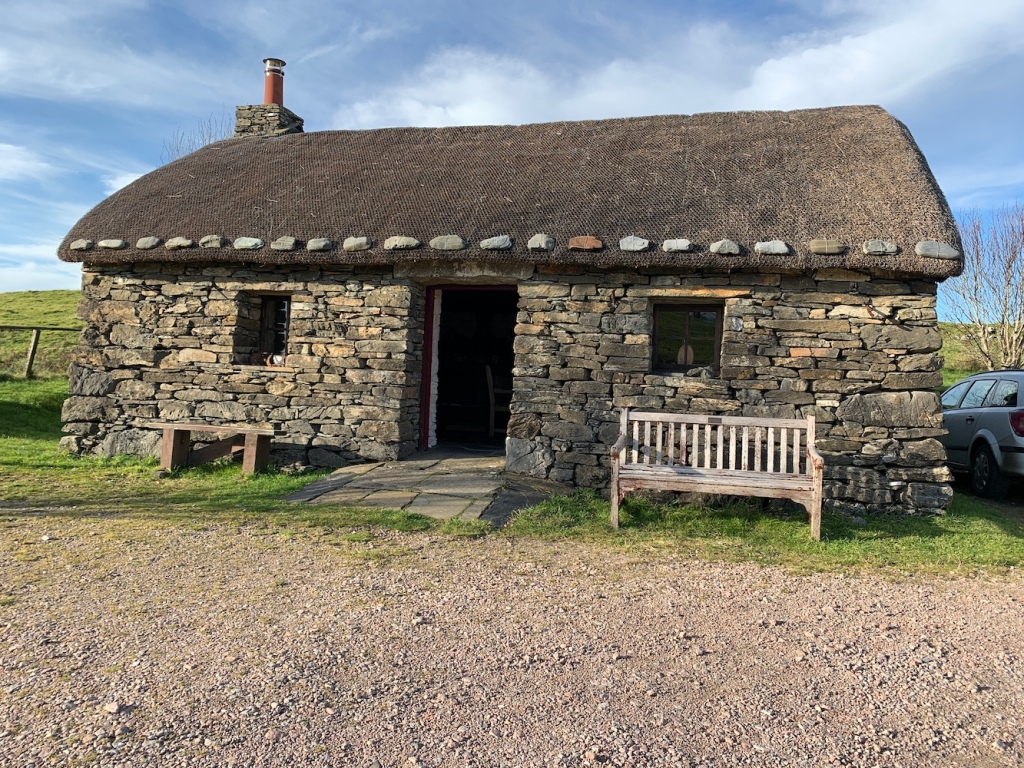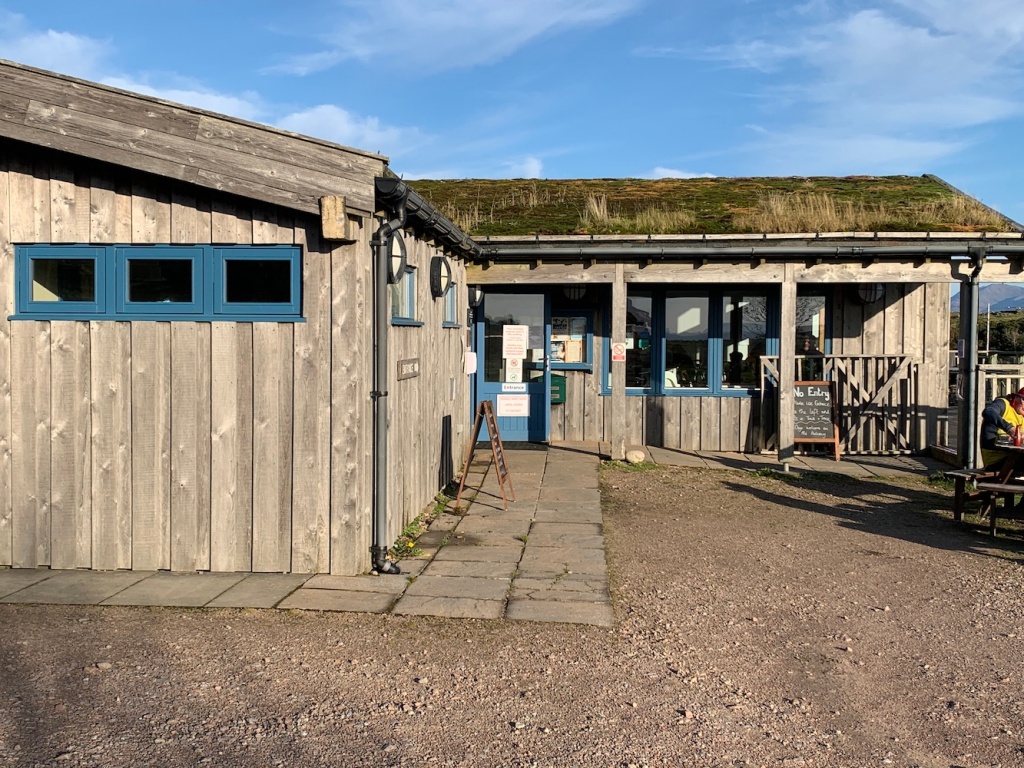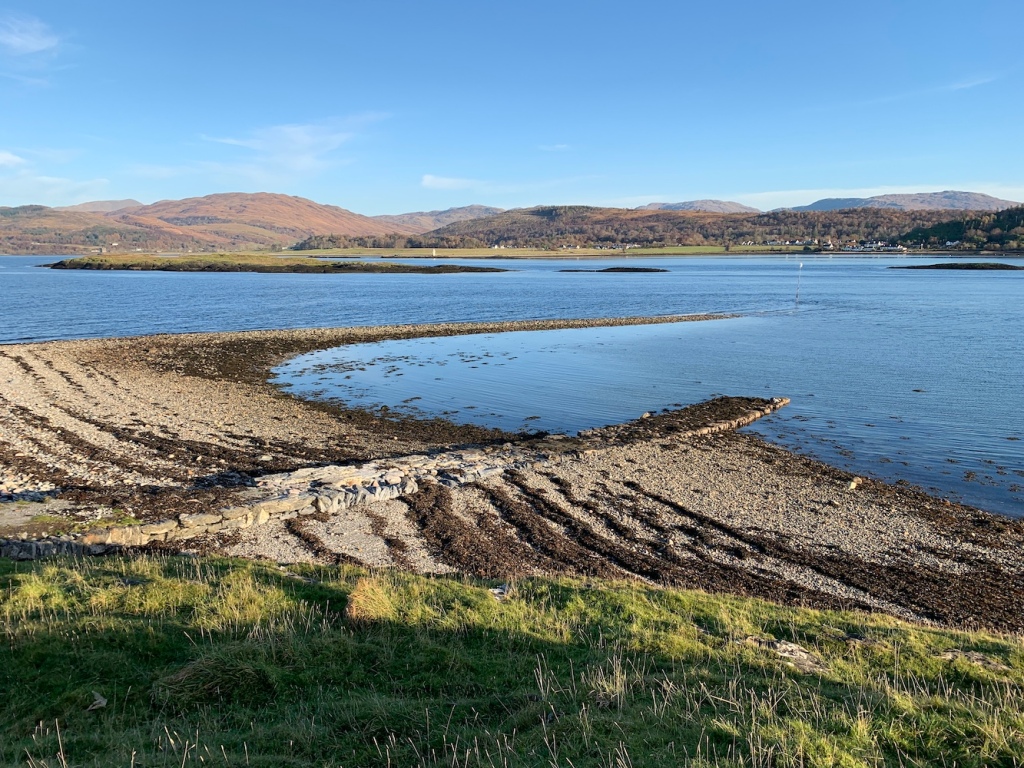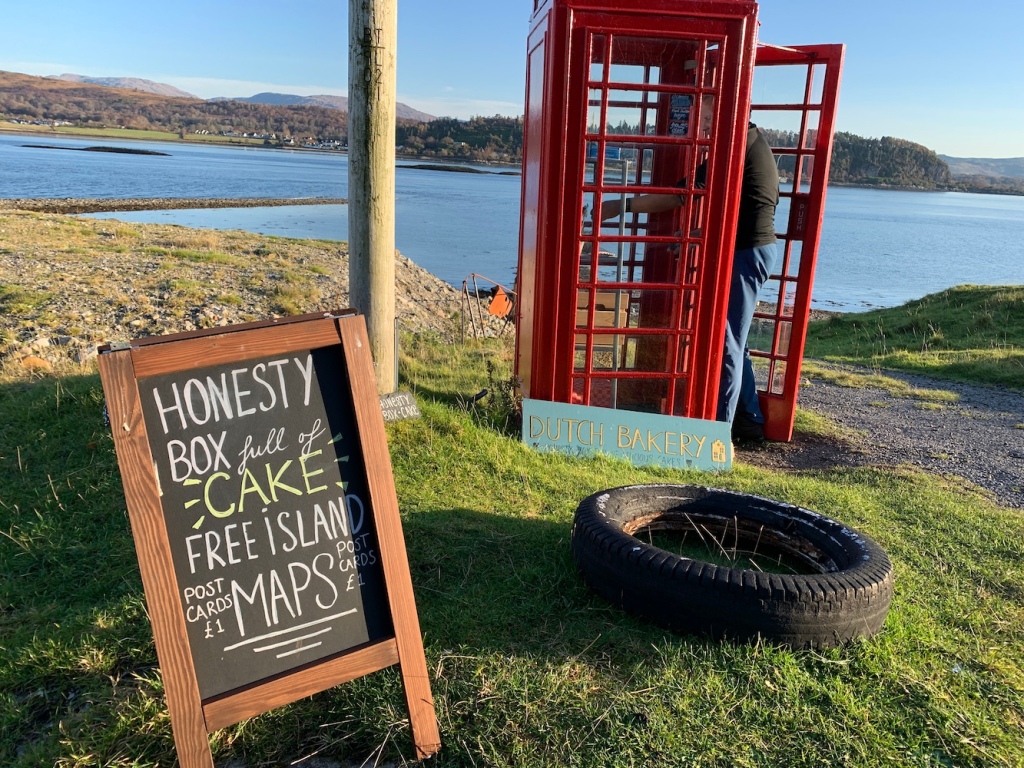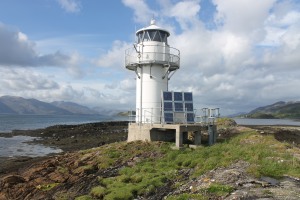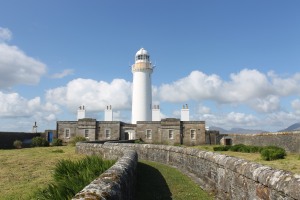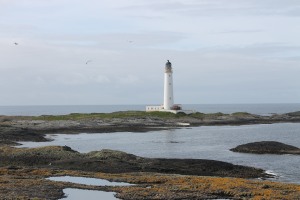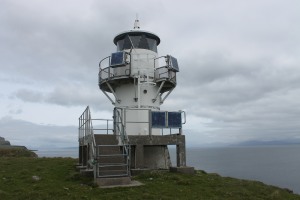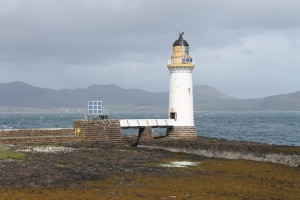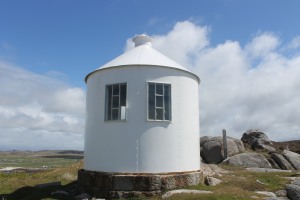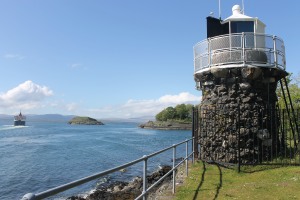Argyll is a beautiful part of Scotland, that’s for sure, and never moreso than in Autumn when it’s beautiful tree-lined roads and coastline completely change the colour of the landscape. It also helps when the sun is shining as it very much was yesterday.
We were due to visit Lismore and had a little time to kill so a stop off at Port Appin to see Sgeir Bhuidhe lighthouse seemed appropriate. It was high tide too, which would give a bit of a different perspective from the last time we were there when we walked out to the light at low tide. It’s very easy to fall in love with this area and the little lighthouse is an important part of the local landscape.
Die hard lighthouse fans will have heard of its rather amusing history, when it was painted to look like Mr Blobby as a protest by a member of the local community during the period when the Northern Lighthouse Board were looking to replace it with one of the IKEA flat-pack lights. I do love a flat-pack lighthouse, but even I would have been devastated by the loss of a lovely little tower if I’d lived in Port Appin at the time.
Thankfully a compromise was reached and a replacement modern round tower was installed, and it’s one of my favourite type too. There is so much to love about this one, including the fact that ‘Sgeir Bhuidhe’ translates as ‘Yellow Rocks’ due to the lichen growing on the rocks, which is evident in these pictures that Joe took. Yellow also happens to be my favourite colour.
Bob wandered off to find a point that would allow him to fly Joe without breaking any of the rules that apply to the use of drones. I knew he would get some excellent shots because it was a wonderful location anyway, but with the calm water and bright skies it seemed perfect.
Meanwhile I took a different route. Firstly I stopped off to revisit the old lighthouse lantern. Another arrangement made between the local community and Northern Lighthouse Board was that the lantern from the old tower could stay in the area and the community have installed some information boards inside it. These boards cover local history, biodiversity and the island of Lismore, which can be seen just across the water. More importantly though it has a panel about the lighthouse and it’s history. It’s really quite clever how they have done it.
From here I took a walk along the road until I reached the pebble beach where I cut down to the sea. It was so incredibly calm with just the sound of the little waves lapping at the shoreline and the small birds singing from somewhere nearby. It’s such a calming place and somewhere that nature takes over and you can’t fail to be affected by it. I could have spent so much longer there and hope to sometime.
This time though there was a ferry to catch. I’d gazed across the water at Lismore and now it was time to go there. Lismore could be quite deceptive for any new lighthouse bagger. Lismore lighthouse must surely be on Lismore you might think, but in fact it’s on a smaller island, Eilean Musdile, just to the south west of Lismore itself. However, we still hoped we would find something of interest relating to the lighthouse at the Gaelic Heritage Centre.
Lismore was a new island for both of us and after the fairly short ferry crossing we headed towards the southern end of the island. After finding a suitable place to stop the car Bob set off to reach the island high point, which he managed to reach after negotiating the river, walls, fences and a row of cows just before the high point. Once he was back we set off to find the Heritage Centre. It’s a great building. Very modern and a nice contrast to the little blackhouse (if they call them that in these parts too) next door. The blackhouse is an exhibit now, kitted out as it would have been many years ago.
The Centre itself has a lot going for it. It contains a big room with the exhibition panels as well as a shop and a cafe. The exhibition gives a fascinating insight into the island, its history and many other aspects. I found the information about the flora and fauna quite interesting. Lismore is known as The Great Garden, which is how its Gaelic name Lios Mor translates. It is home to 200 species of wildflower and 18 species of butterfly, so it certainly lives up to its name.
Further around the exhibition we spotted some information about Lismore lighthouse and, interestingly, the old telescope from the lighthouse, which is engraved with ‘Lismore Lighthouse (Signalmen)’. A special little artefact. There was also a lovely lighthouse design by the local children on one of the windows.
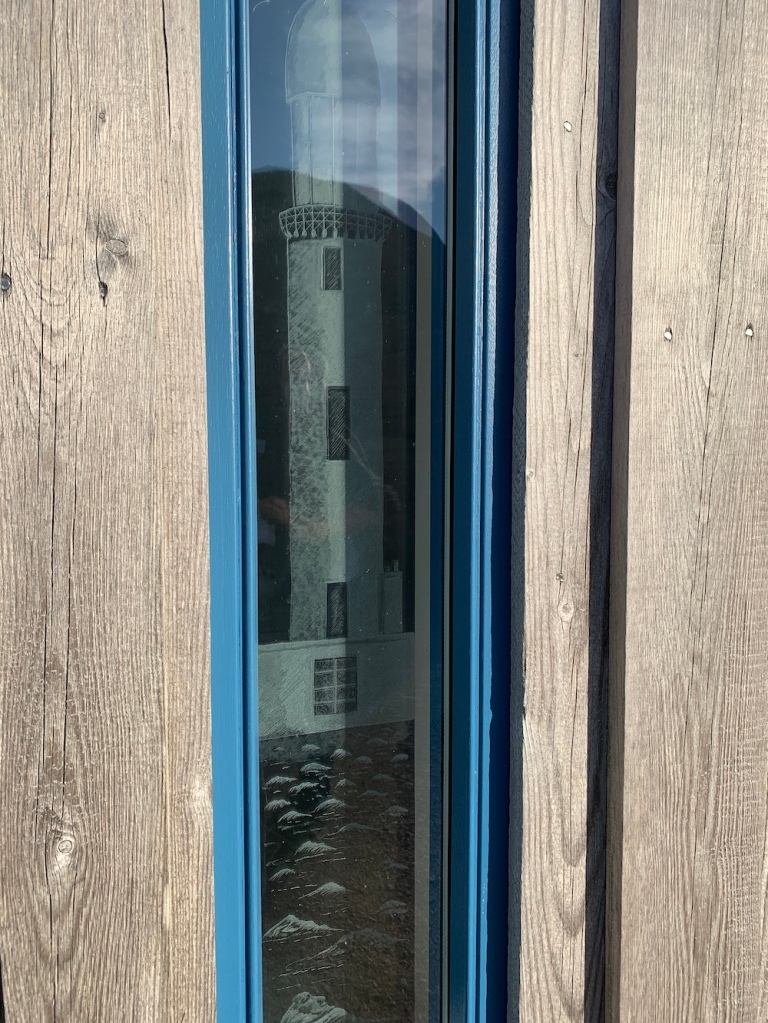
Standing outside on the balcony in the sunshine, we ate lunch before continuing to explore a bit more of the island. Heading up to the arrival point for those travelling on the foot passenger only ferry from Port Appin, we were able to get more views of Sgeir Bhuidhe lighthouse. Before concluding our visit to the island and heading back to the ferry, we even managed to buy a Danish pastry from the little phone box!
It had been a fantastic day, very much helped by the weather. It’s good to be out and enjoy the outdoors while we can as we don’t know when that might need to stop again. One more post for this weekend to come 🙂

